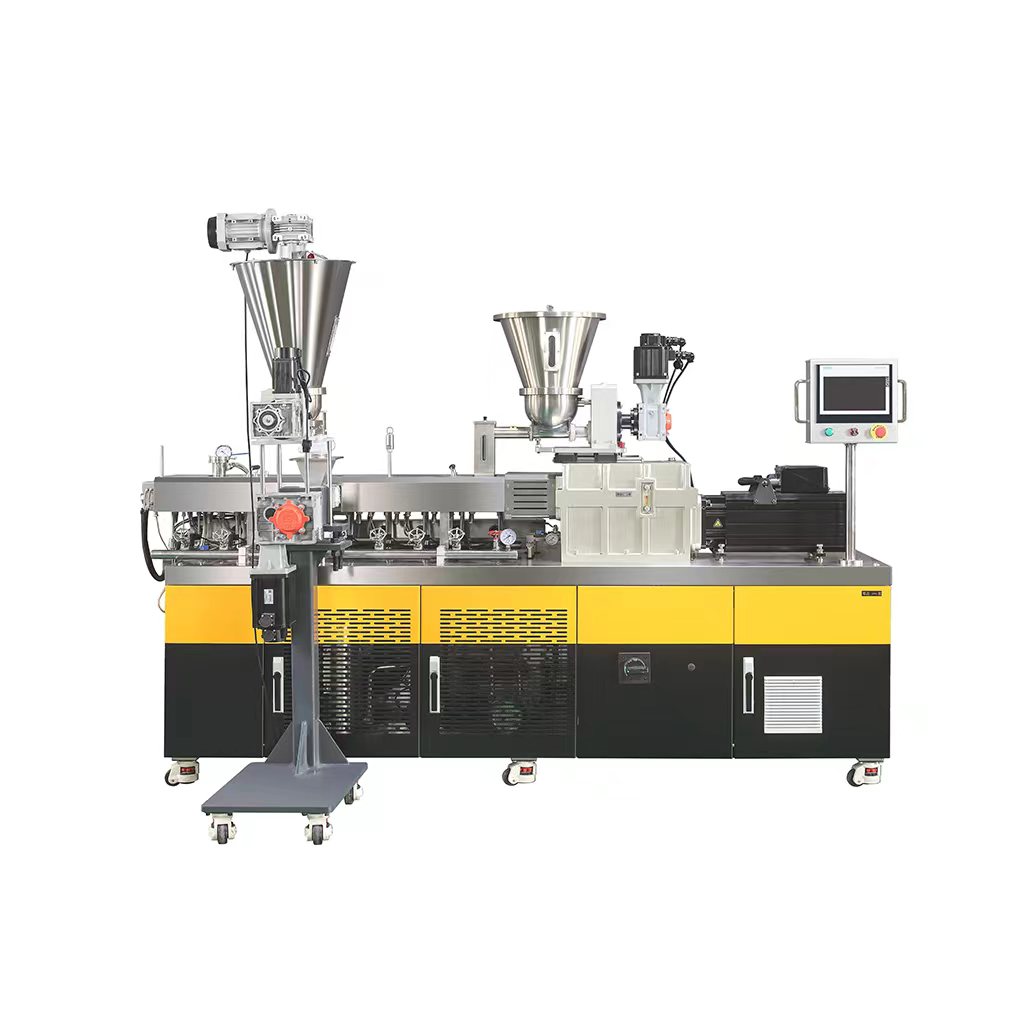Three screw compounding extruder
It has been successfully applied to productive plastics such as PA6 toughened PP, calcium carbonate filled PP, and for processing EPDM/PP thermoplastic elastomer dynamic full vulcanizate.
The three-screw compounding extruder can achieve the compounding and mixing effect that the traditional twin-screw extruder can only achieve with a larger aspect ratio under the condition of a smaller screw aspect ratio. It has the unique advantages of high filling, high dispersion, high output and low energy consumption. It can be widely used in plastic blending modification, filling modification, additive dispersion, fiber reinforcement, blending reaction, polymerization reaction, exhaust devolatilization and other processing fields.

How it works
The three screws of the three-screw compounding extruder are arranged in a “one” shape and rotate in the same direction at high speed, so that the material is subjected to strong shearing, extrusion, kneading, and grinding, and is better homogenized and dispersed. The three-screw extruder has an additional high shear zone compared to the traditional twin-screw extruder, thus achieving a doubling of the plasticizing and mixing performance of the twin-screw extruder of the same specification, so high-output extrusion can be achieved, and the production capacity is twice that of the twin-screw extruder. Due to the increase in specific surface area and the increase in surface renewal rate, the devolatilization efficiency is also greatly improved.
Main innovations
● Developed the polymer three-screw compounding extrusion equipment for the first time;
●Adopt three screw structures with the same direction, parallel and equal diameter;
● Achieve the purpose of mixing and kneading under the condition of smaller screw length-to-diameter ratio, which can only be achieved under the condition of larger screw length-to-diameter ratio with twin screw.
Application
● Blending modification or filling enhancement with high dispersion requirements and large filling amount, such as the preparation of polyolefin modified materials, engineering plastic modified materials, etc.;
● Reaction extrusion with high requirements for mixing, mixing, exhausting and devolatilization, and residence time uniformity, such as XLPE cable materials, silane cross-linked cable materials, TPE, etc.;
●Preparation of high-concentration masterbatches and other functional masterbatches with high dispersion effect requirements, such as high-concentration black masterbatches, high-filling flame retardant materials, semi-conductive materials, etc., online compounding and molding of films, plates, and injection molded parts, such as breathable films, long glass fiber reinforced plastic structural parts, etc.
